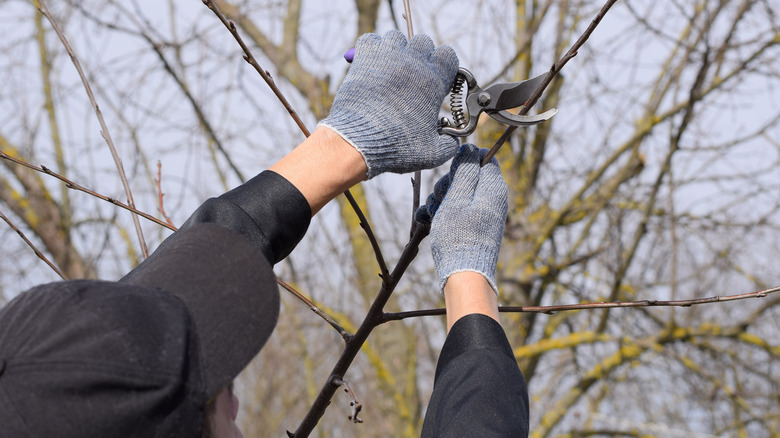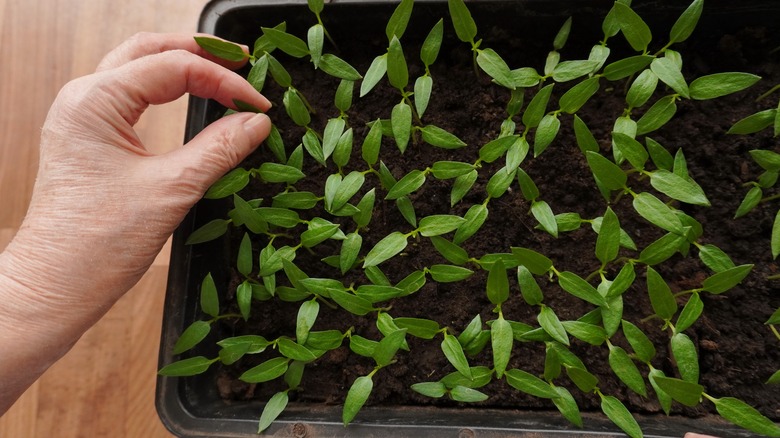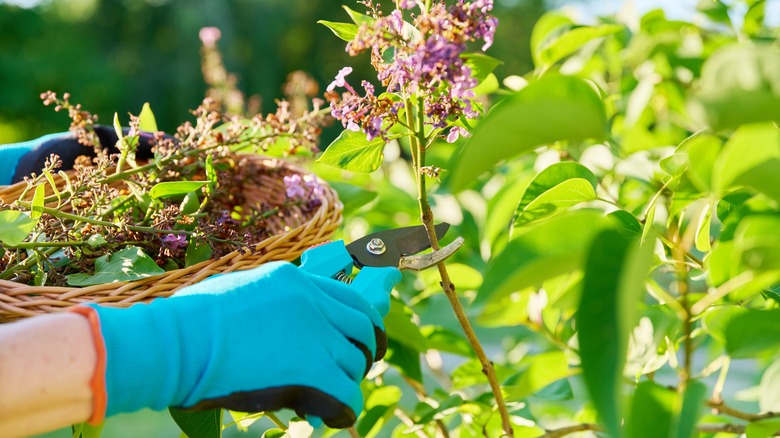Thinning: How This Method Will Rescue Your Plants (& Which Plants To Use It On)
Thinning: not just for your hair and your patience! It's an important part of gardening and maintaining your plants' health so they can thrive throughout the season. This practice involves selectively removing excess or weaker plants, usually seedlings, so that the stronger ones can remain and flourish without as much competition. You can even thin seedlings for a bigger harvest in your vegetable garden. The theory behind it is that by reducing the density at which the plants are growing, you can provide more resources to fewer plants in terms of sun, water, airflow, and nutrients.
While seedlings are often thinned to promote the growth of healthy new plants, thinning can also be used on established plants like shrubs that have become quite dense and might suffer simply from having too much overgrowth. At the same time, with fewer branches, those you saved can receive more sunlight, which can foster better growth. It might seem counterintuitive to cut several limbs off a plant to help it thrive, but it will benefit them in the long run. Most importantly, thinning promotes better air circulation around the branches and leaves of the remaining parts of the plant. Airflow is crucial because it can prevent some pests from seeking refuge among the foliage and discourage moisture buildup, which is known to promote fungal infections. So, by thinning out your plants properly, you might prevent diseases from pests, fungi, viruses, and bacteria.
How to thin your plants
How you thin your plants and when you do it typically depends on the type of plant you're working with, but the process can be applied generally. If you're at the beginning of the growth cycle, you'll work with seedlings or very young plants grown from seeds. The best time to thin seedlings is after they have developed their first true leaves and are sturdy enough to handle it. Thinning too early can actually damage the remaining seedlings, while thinning too late can risk overcrowding and stunted growth. To thin them, gently grasp the weaker ones at the base and carefully pull them out or snip them with clean shears at the soil line. Space them according to the plant's requirements and discard the thinned pieces.
For more established plants, like shrubs, thinning is essential to help these individual or neighboring plants mature properly without overcrowding themselves, promoting airflow and access to sunlight, which will inevitably help to prevent diseases. When you thin will depend on the individual plant's growth and flowering habits, but generally, the best time to do so is while the plant is dormant in late winter or early spring before any new growth emerges. Start by removing dead, damaged, or diseased branches. Then, using clean shears, prune away inward-growing or crossing branches to open the canopy and prevent self-harm. Respect the shrub's natural shape while removing excess growth that detracts from its overall appearance.
Which plants love thinning
If you're looking to thin seedlings, one popular plant many grow from seed is tomatoes. We recommend starting tomato seeds in peat pots. When they've started growing, thinning seedlings is vital to reduce competition for resources, allowing these plants to develop strong, deep root systems with sturdy stems. Wait until their seedlings have produced their first true leaves. Snip the weaker ones at the base of the soil, and then when it's time to transplant, space them out according to your variety's directions. You can also thin tomatoes once they're established by removing suckers, which are smaller stems that develop between the main stem and an offshoot. This promotes stronger growth of the main stem and its flowers.
One shrub that enjoys thinning is lilac. Thinning these fragrant, flowering beauties will enhance their health, appearance, and blooming capacity, promoting airflow and sunlight penetration. Ultimately, you'll help encourage prolific flowering while preventing diseases in this plant. Lilac, unlike other shrubs, actually enjoys thinning during its growing season. One of the ways how to protect your beautiful lilac bush is by thinning it after it finishes flowering since its buds for next year will develop before the dormant season, and you risk reducing its blooms if you wait until winter or spring. Remove any damaged, diseased, or dead branches, and then open up the canopy using clean shears to cut away cross branches or branches that have grown inward.


